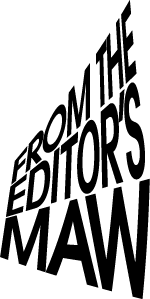 |
   by Quentin Long ©2010 Quentin Long |
||
|
|
|||
 |
   by Quentin Long ©2010 Quentin Long |
||
|
|
|||
‘Life’ has always been hard to define—which is pretty much what you’d expect of something that’s the result of gigayears’ worth of cycles of random variation, reproduction, and differential survival. Sure, you can point to a physical trait (or set thereof) which is shared by however-many different critters… but! Just because some particular Trait X is displayed by specimens from one particular ‘branch’ of the resulting ‘tree’, that’s no guarantee that this same Trait X must necessarily show up in any other ‘branch’ of that ‘tree’, right?
That said, ‘ability to distinguish between Self and Other’ would seem to be a reasonable candidate for a defining characteristic of Life. In metazoan (multicellular) critters, the job of the immune system is to identify and destroy/evict cells which are not part of the organism’s Self; in unicellular critters, which make up the vast majority of life on Earth by some measures, the cell has a physical barrier (its membrane and/or wall) which walls off the cell’s contents, i.e. its Self, from everything outside the cell, i.e. what is Other from the cell’s perspective.
At this point, some of you are probably thinking, All living things can distinguish between Self and Other? Yeah, right. Has this guy never heard of viruses or prions? My answer: Of course I’ve heard of viruses and prions! I’ve also heard that it’s a long-standing scientific controversy whether or not those things actually do qualify as ‘Life’. And if the only counterexamples to the proposition ‘Life intrinsically distinguishes between Self and Other’ are thingies whose membership in the class ‘Life’ is arguable, if not downright questionable… well, I’m okay with that. So I’m going to assume, for the duration of this editorial, that the Self/Other thing genuinely is a fundamental defining characteristic of Life.
The Self/Other dichotomy seems to show up on many different levels of abstraction. Individual cells have their membranes/barriers; metazoans have their immune systems; societies have their shibboleths, their in-group/out-group markers—
Okay, it’s not at all clear whether a society—a collection of living things—constitutes ‘Life’ in the relevant sense. Even so, it’s interesting that when living things form long-term behavioral associations with one another, those behavioral associations can and do distinguish between Self (i.e., ‘you are part of the in-group’) and Other (i.e., ‘you are part of the out-group’).
One is tempted to hypothesize that the Self/Other thing applies any time you’re dealing with evolved subunits—be they molecules, individual cells, individual organisms, or whatever else—that work together as part of a greater whole—which could be a pre-cellular catalytic hypercycle, a conventional metazoan organism, a society, or whatever else. Such a hypothesis would make sense, on the grounds that efficiency of reproduction is one of the things that variation-reproduction-selection cycles select for just because, and distinguishing between Self and Other would be helpful in discouraging one major source of inefficiency (that being ‘subunits relatively unsuited to their task within the larger system’).
Of course, if you’re going to distinguish between Self and Other, it’s helpful to have some idea of what this ‘Self’ thingie is, so that you’ve got something to distinguish from Other. Does an individual cell qualify as ‘Self’? Yes, if it’s something like a free-living bacteria, and no, if it’s a spleen cell or whatever. Fortunately, things are simpler at the higher levels of abstraction (i.e., multicellular critters and up): If it’s an organism, it’s a ‘Self’, right? Well... maybe. Bees are organisms, but does any one bee truly constitute an individual entity in its own right? At the very least, it’s arguable that the answer is ‘not really’. And consider societies; a good chunk of human history, even up to the present day, has revolved around the question of which human beings are or aren’t ‘of the body’.
For writers, the Self/Other distinction is likely to be most relevant in ‘first contact’ stories, those whose plot is driven by the premise of the very first encounter between two wholly alien species. Such encounters are messy enough when the two species are similar enough to agree on what does or doesn’t count as an individual Self; just imagine how much more sticky things could get if the two species’ representatives don’t even agree on that much! And if the two species’ respective concepts of Self are significantly different, it’s a good bet that their subsequent relations (diplomatic, economic, etc) will be influenced in many ways, great or small, by their differing Self-concepts… including ways which make for interesting stories!